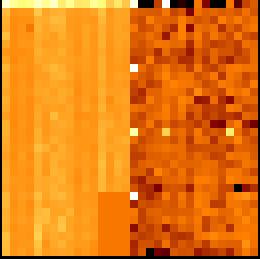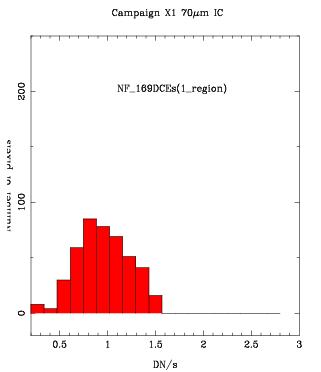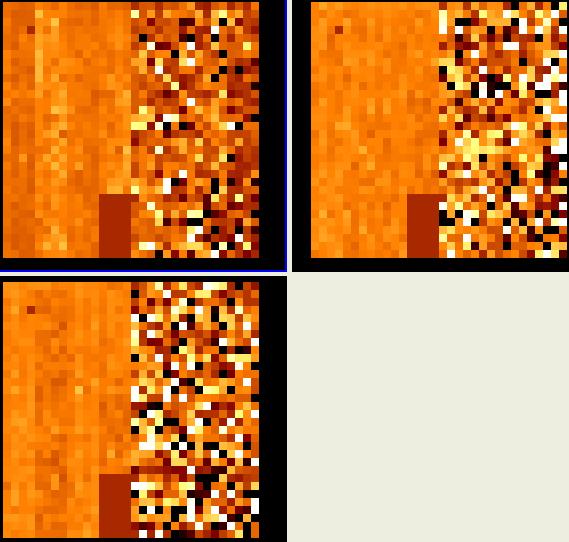
Figure1. The 70micron Illumination Correction obtained in NF mode displayed from z1=-6.209742 z2=6.495448.
Principal:
Deputy:
Analyst:
AORKEYS:
Last Updated:
We have observed a 70micron narrow-field photometry cluster-target AOR with 3 second DCEs and 6 pointings in a rectangular pattern (2x3, with 300 arcsec offsets) for a region of sky free of bright 70micron point-sources. The total number of DCEs is 132 times 2 observations for a total of 169 DCEs in the final combined image.
The reduction was performed with the DAT programs. We used mips_sloper with
sensitive cosmic ray detection (-q option)
turning off the electronic non-linearity correction, mips_caler (using
the me_70_darka_CamX1_18nov2003.fits)
and mips_enhancer with the following options:
verbose = 0
scale = 1.
filename = ic70_scan
prefix = ic_scan70
nXTile = 1
nYTile = 1
dark = 0
flat = 0
illumination_correction = 1
NormalizeInput = 1
SigmaCut = 3.0
SigmaTolerance = 0.25
MaxIterations = 10
StackSTDEV = 0
OutlierMinPoints = 3
QuartileFactor = 10
OverlapTolerance = 0.5
diagonistics = 1
WriteGeometry = 0
WriteOutlier = 0
WriteTiles = 0
FluxMean = 0
FluxMedian = 1
OverWrite = 1
distortion = 0
UseBoostFrame = 1
reject = 1
NormalizeSideA = 1
Note that we rejected the first DCE after the stim flash (reject = 1 option) and normalized
the input images (NormalizeInput = 1 option) using Side-A only (NormalizeSideA = 1).

Figure1.
The 70micron Illumination Correction obtained in NF mode displayed from z1=-6.209742 z2=6.495448.

Figure2.
Histogram of the 70micron Illumination Correction observed in Campaign X1
obtained in NF mode.

Figure3.
Ratio of 70micron Illumination Corrections. Up-left: ratio of two ICs, one made with half of all the DCEs taken in Campaign X1 and the other with the remaining half. Up-right: half-to-half of all the data taken before anneal (task 930). Bottom-left: half-to-half of all the data taken after anneal. Cuts are z1=-2. z2=4. in all cases.